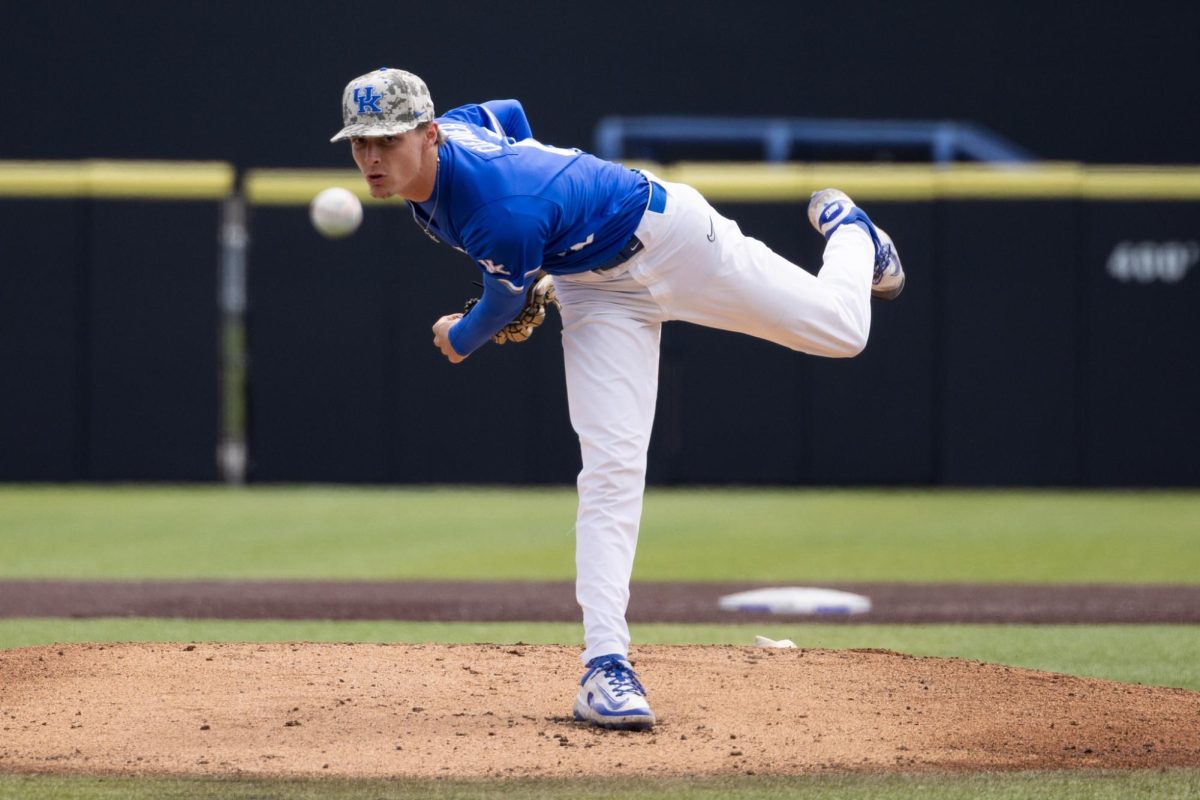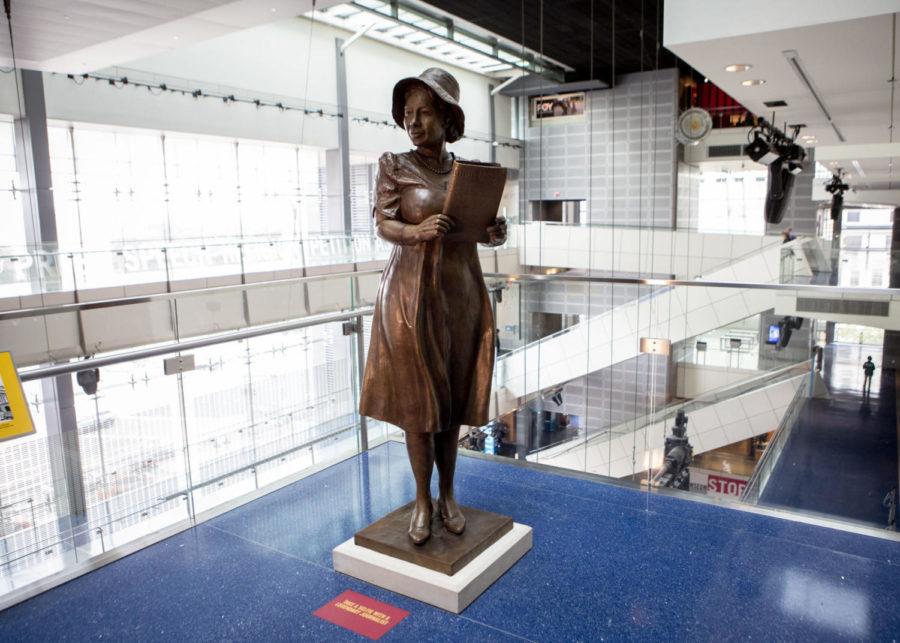Statue of Kentucky journalist Alice Dunnigan unveiled at Newseum
September 21, 2018
Thirty-five years after her death, journalist Alice Allison Dunnigan stands tall in the Newseum.
Her likeness and legacy live on through a sculpture that was unveiled Friday in Washington, D.C.
The sculpture of Dunnigan, a Kentucky native and the first black female journalist to cover the White House, will be displayed at the Newseum until December of this year.
More than 50 people— including members of Dunnigan’s family, her sorority sisters in Alpha Gamma Rho, and media— watched as the sculpture was unveiled for the first time.
Sculptor Amanda Matthews said the event was “overwhelming in the best sort of way.” Matthews and her husband Brad Connell, who own Prometheus Art in Lexington, have been working toward the completion of this project for years.
“I thought this project could not become more delightful and wonderful, until I met the rest of her family, and that was really one of the absolute best parts of the project,” Matthews said.
READ: After a lifetime of breaking barriers, Alice Dunnigan is memorialized in bronze
One of Dunnigan’s great-nieces, Penny Allison Lockhart, spoke along with Matthews before the statue was unveiled.
“Aunt Alice has always been famous to us,” Lockhart said in an interview. “We’ve loved her from the time I was a little girl.”
Lockhart and her sister Angela Alice Allison Stephens told stories about the younger members of the Dunnigan extended family, who have written about Dunnigan’s career for Black History Month.
“Now we get to share her with the rest of the world, especially the journalism world,” Lockhart said.
After Matthews and Lockhart spoke to those gathered, Newseum Vice President of Content and Exhibit Development Patty Rhule called for the unveiling.
“Without further ado, please welcome Alice Allison Dunnigan to the Newseum,” Rhule said.
The statue, which is made of bronze and stands 6-foot-3, was met with overwhelming applause. It stands on a balcony on the fourth floor of the museum, overlooking the lobby. In her hands is a copy of The Washington Post.
Soraya Dunnigan Brandon, Dunnigan’s youngest granddaughter, has followed in her grandmother’s footsteps to be an educator and freelance journalist. She said her grandmother would be happy, proud and humbled to see her statue standing in the Newseum.
Brandon referenced Dunnigan’s autobiography, where she wrote about the feelings she had when she received her credentials.
“She persevered, she was persistent, she was qualified,” Brandon said. “…So for her to be here, she would know that she deserved it.”
While some of Dunnigan’s family, like Lockhart and Stephens, were born and live in Kentucky, Brandon did not visit Kentucky until after her grandmother’s death.
“My grandma’s a great storyteller, so the stories she told— they were so intriguing and just made you want to be there,” Brandon said.
The family had planned a trip to Kentucky together, Brandon said, but Dunnigan grew sick and passed away before it could happen. So Brandon made a personal commitment to visit Kentucky and get to know her relatives there.
Brandon said her grandmother’s stories about teaching in Kentucky made her think of Little House on the Prairie.
“She loved her state, I can tell you that,” she said.
Brandon even continued her grandmother’s legacy by matching her. In the sculpture, Dunnigan is wearing a plain dress due to Matthews’ creative license, but in the photo that inspired the sculpture, Dunnigan’s dress is polka-dotted.
At the unveiling, Brandon was also wearing a polka-dotted dress.
“There’s a story behind that,” Brandon said with a laugh.
She brought something different to wear, she said, but her brother “insisted” on buying her something special.
“It was a last minute thing, and I’m just honored that he even thought about that,” she said.
While the sculpture and the event honor the past, members of Dunnigan’s family are also looking to the future.
Lockhart said that her grandmother would want to encourage people to “keep this movement going”— meaning the equality movement for women and African-Americans.
“I believe she would encourage other women to be more and be greater than what she was,” Stephens said. “I know she laid the foundation and the pathway, but it doesn’t stop here.”
Once Dunnigan’s sculpture has finished its stay on Pennsylvania Avenue, it will eventually find its way back to her hometown of Russellville.




























































































































































